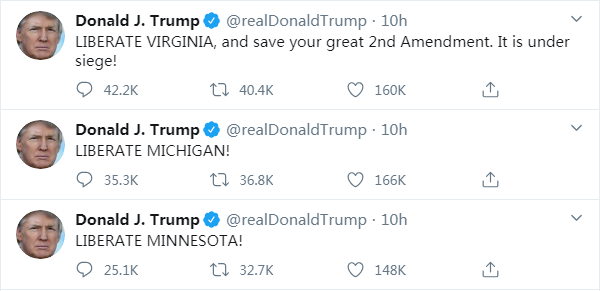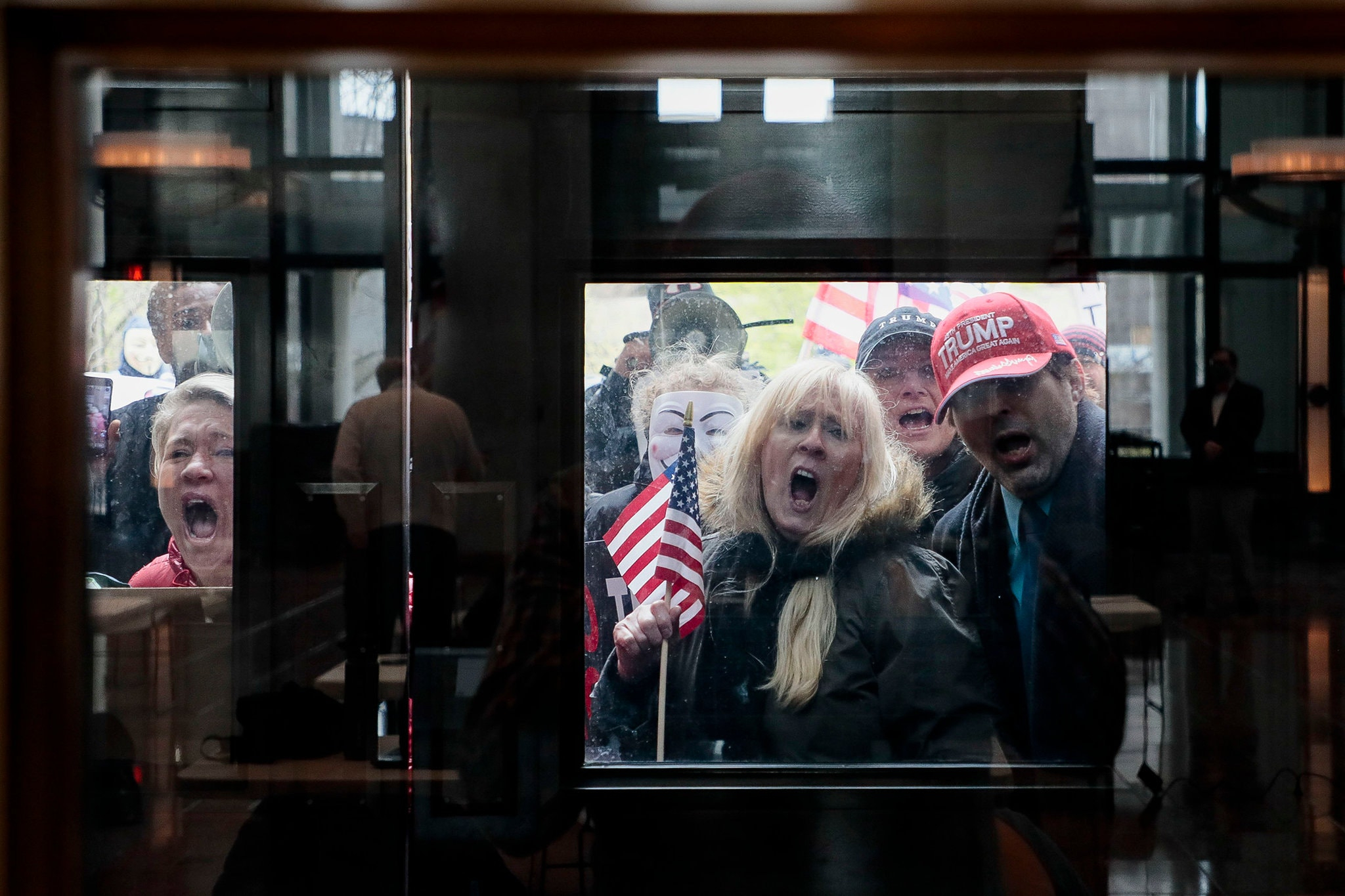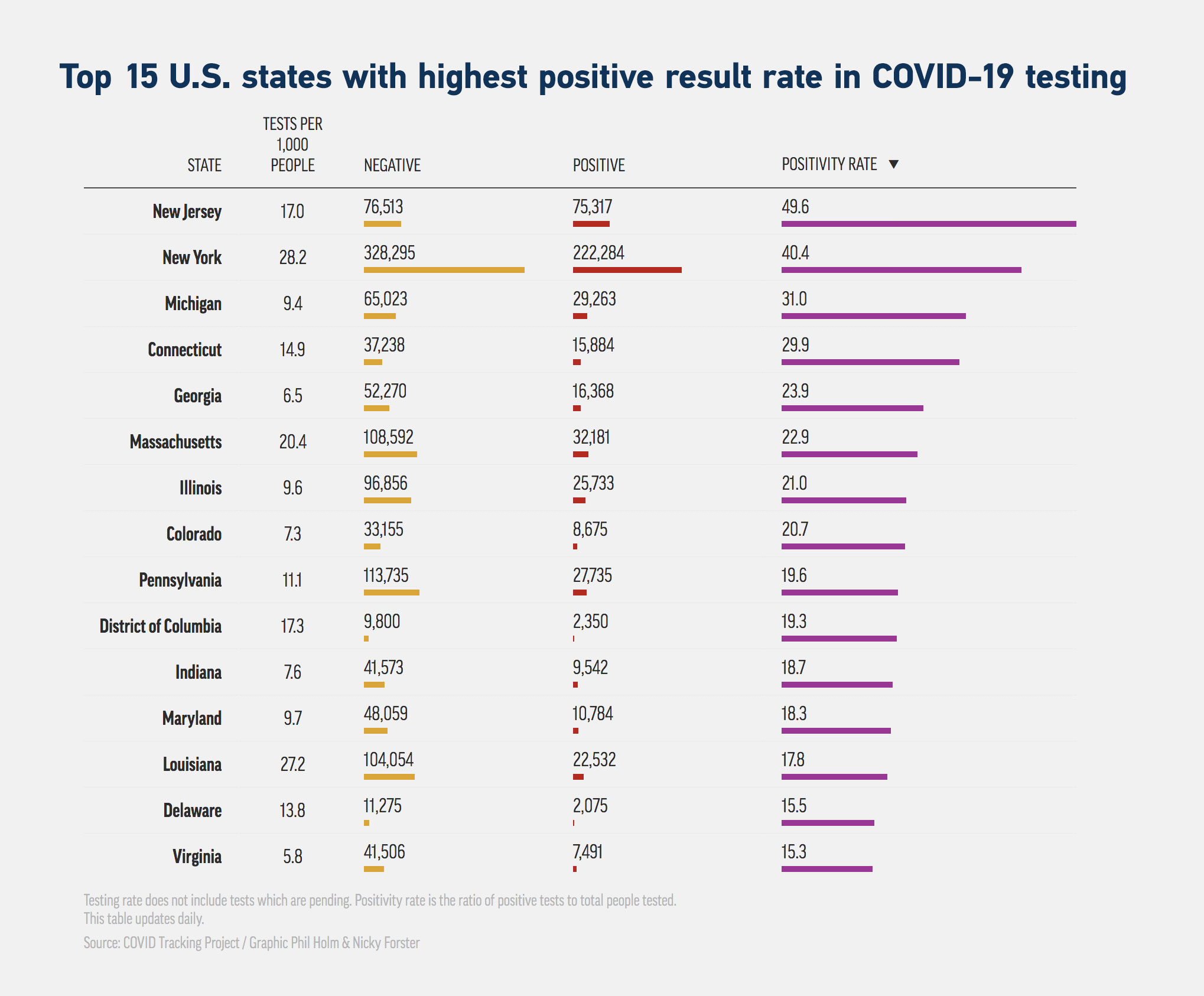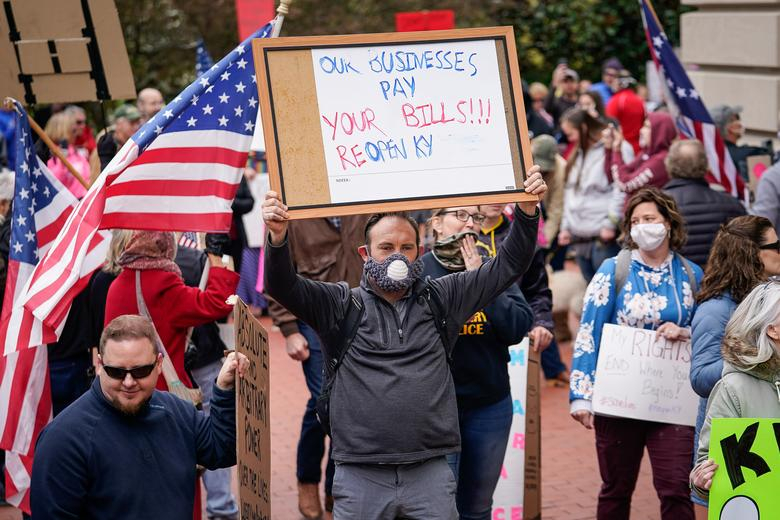President Donald Trump urged supporters to "LIBERATE" three states led by Democratic governors Friday, seemingly encouraging protests against stay-at-home restrictions aimed at stopping the coronavirus.

Washington Governor Jay Inslee, a Democrat, said Trump's tweets about "liberating" states put millions of Americans at risk of contracting COVID-19.
"The president is fomenting domestic rebellion and spreading lies even while his own administration says the virus is real and is deadly," Inslee said.
A day after laying out a road map to gradually reopen the crippled economy, Trump echoed the rhetoric some of his supporters have used to demand the lifting of the orders that have thrown millions of Americans out of work.
At least two states have taken their first steps toward easing the restrictions.
In Florida, the GOP Governor Ron DeSantis said municipalities could reopen beaches and parks if they could do so safely. In Texas, Republican Governor Greg Abbott said stores could begin selling curbside, nonessential surgery could resume and state parks could reopen.

Protesters outside the Statehouse Atrium during the State of Ohio's Coronavirus response in Columbus, Ohio, April 13, 2020. /AP
Protesters outside the Statehouse Atrium during the State of Ohio's Coronavirus response in Columbus, Ohio, April 13, 2020. /AP
Protests push back on stay-at-home orders
The shutdowns have inflicted heavy damage on economies around the world. In the U.S., the crisis has cost at least 22 million Americans their jobs, pushing the unemployment rate toward levels not seen since the Great Depression.
Many Americans, especially in rural areas and other parts of the country that have not seen major outbreaks, have urged governors to reopen their economies. Thousands of protesters in Ohio, Texas, North Carolina, Kentucky, Virginia, Michigan, Minnesota and Idaho, states led by both Republican and Democratic governors, took the street on Wednesday to protest against the stay-at-home orders.
Public health experts have warned that easing the shutdowns must be accompanied by wider testing and tracing of infected people to keep the virus from coming back with a vengeance.
Sensitive about persistent questions about the capacity for testing, Trump had his health team lead an extensive briefing Friday outlining that adequate capacity exists to get states through the first phase of the guidelines for how they should reopen.
However, the overall testing rate across America is still under single digits.

Data compiled by AP as of Friday.
Data compiled by AP as of Friday.
Responding to pleas from governors for help from Washington in ramping up testing for the virus, Trump put the burden back on them: "The States have to step up their TESTING!"
Trump claimed Friday that "very partisan voices" had spread "false and misleading information" about the nation's testing capacity. But he said "we'll help New York and all of the other states get even better on their testing."
Governors cautioned about the risks of reopening
According to Johns Hopkins University's tally, there are now at least 700,282 cases of coronavirus, including at least 36,822 fatalities in the U.S. as of Friday.
The official death toll in the U.S. neared 35,000, with about 685,000 confirmed infections.
Trump has repeatedly expressed his desire to see businesses reopen quickly and claimed earlier this week that he had total authority over the matter, even though the lockdowns and other social-distancing measures have been imposed by state and local leaders, not Washington.
"We may be opening but we're putting safety first," Trump said.

Hundreds of protestors march outside the Kentucky State Capitol to rally against current social distancing rules and business closures ordered by Governor Andy Beshear in Frankfort, Kentucky, April 15, 2020. /Reuters
Hundreds of protestors march outside the Kentucky State Capitol to rally against current social distancing rules and business closures ordered by Governor Andy Beshear in Frankfort, Kentucky, April 15, 2020. /Reuters
On Thursday, he outlined a three-step set of guidelines for easing restrictions over a span of several weeks in places that have robust testing and are seeing a decrease in COVID-19 cases, assuring the nation's governors: "You're going to call your own shots."
But governors of both parties suggested Friday that they would be cautious in returning to normal, with some warning that they can't do it without help from Washington to expand testing.
"Until we've got the testing up to speed — which has got to be part of the federal government stepping in and helping — we're just not going to be there," said Wyoming Governor Mark Gordon, a Republican.
West Virginia Governor Jim Justice, a Republican ally of Trump's, said he would listen to medical experts in deciding how to move forward.
"I am not going to do something that I feel in my heart is the wrong thing that's going to endanger our people," he said.
The University of Washington, whose computer models have frequently been cited by health officials at White House briefings, predicted Friday that Vermont, West Virginia, Montana and Hawaii could open as early as May 4 if they restrict large gatherings, test widely and quarantine the contacts of people who test positive.
Iowa, North and South Dakota, Nebraska, Utah, Arkansas and Oklahoma, however, are among states that would need to wait until mid-June or early July. About half the states should wait until at least early June to reopen, and all should gauge the capacity of their public health systems to handle outbreaks, the institute said.
(With input from agencies)